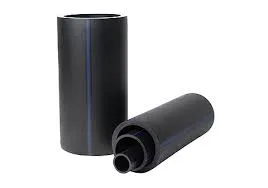Nov . 20, 2024 08:55 Back to list
gas pipe fittings
Understanding Gas Pipe Fittings An Essential Component of Plumbing Systems
In the realm of plumbing and gas installation, gas pipe fittings play a pivotal role in ensuring safe and efficient gas distribution. These fittings are crucial components that connect various sections of gas piping, facilitating the flow of natural gas or propane throughout residential, commercial, and industrial structures. Understanding gas pipe fittings, their types, applications, and installation procedures can help ensure the safety and efficiency of gas systems.
What are Gas Pipe Fittings?
Gas pipe fittings are specialized components designed to join, redirect, or terminate sections of gas piping. They are specifically engineered to withstand the pressures and demands characteristic of gas flow systems. Commonly used materials for these fittings include steel, brass, copper, and PVC, with the choice often depending on the type of gas and the specific requirements of the installation.
Types of Gas Pipe Fittings
There are several types of gas pipe fittings, each serving a distinct purpose
1. Elbows These fittings allow for the change of direction in gas piping. They are available in various angles, with 90-degree and 45-degree elbows being the most common.
2. Tees T fittings are used to create a branch line from the main gas pipe. They allow for the easy connection of additional lines, which can be crucial for distributing gas to multiple appliances.
3. Couplings These fittings are used to join two sections of piping. They can be either straight or reduce in size, accommodating different diameters of pipes.
4. Adapters These pieces allow for the connection of two dissimilar piping systems, such as transitioning from metal to plastic pipe.
5. Valves While not strictly fittings, valves control the flow of gas through the piping system. Shut-off valves are particularly critical for safety, allowing homeowners and technicians to quickly halt gas flow in emergencies.
gas pipe fittings

6. Caps and Plugs Caps seal the ends of pipes, while plugs perform a similar function but are inserted into the fitting. Both are used to terminate sections of piping that are not in use.
Applications of Gas Pipe Fittings
Gas pipe fittings are essential in various applications, including residential gas systems for heating, cooking, and powering appliances. In commercial settings, they play a vital role in fueling restaurant kitchens, heating systems, and industrial equipment. By ensuring the proper flow and direction of gas, these fittings help maintain efficient operation and enhance safety.
Installation and Safety Considerations
The installation of gas pipe fittings requires careful attention to detail and adherence to local building codes and safety regulations. Gas leaks can pose significant hazards, including fire and explosions, so it is crucial to use appropriate materials and techniques.
1. Material Selection Choose fittings made from suitable materials that can tolerate the specific gas type being used. For example, while PVC is acceptable for some gas applications, metal fittings are usually preferred for natural gas and propane.
2. Proper Installation Follow manufacturer guidelines and local code requirements during installation. Employ the right tools and techniques to ensure secure connections, as loose fittings may lead to leaks.
3. Testing for Leaks After installation, conduct leak tests using a solution of soap and water or a specialized leak detection spray. Any bubbles indicate a leak, which must be addressed before using the system.
4. Regular Inspections Routine inspections and maintenance of gas piping systems, including fittings, are crucial for long-term safety. Look for signs of wear, corrosion, or degradation and replace components as necessary.
Conclusion
Gas pipe fittings are fundamental to the functionality and safety of gas distribution systems. By understanding the various types of fittings and their applications, as well as the critical importance of proper installation and maintenance, both professionals and homeowners can ensure the safe and efficient operation of gas systems. Investing time and resources into the correct selection and installation of gas pipe fittings ultimately contributes to a safer and more reliable gas infrastructure.
-
High-Quality PPR Pipes and Fittings Durable ERA PPR & PVC PPR Solutions
NewsJul.08,2025
-
Black HDPE Cutting Board - Durable, Non-Porous & Food Safe HDPE Plastic Cutting Board
NewsJul.08,2025
-
High-Quality CPVC Panel Durable HDPE & PVC Panels Supplier
NewsJul.08,2025
-
Double PE Welding Rod Supplier - High Strength, Durable & Versatile Welding Solutions
NewsJul.07,2025
-
High-Quality PVC-O Pipe Supplier Durable 75mm PVC Pipe & Connections Leading PVC Pipe Company
NewsJul.07,2025
-
HDPE Drainage Pipe Supplier – Durable & Corrosion-Resistant Solutions
NewsJul.06,2025

